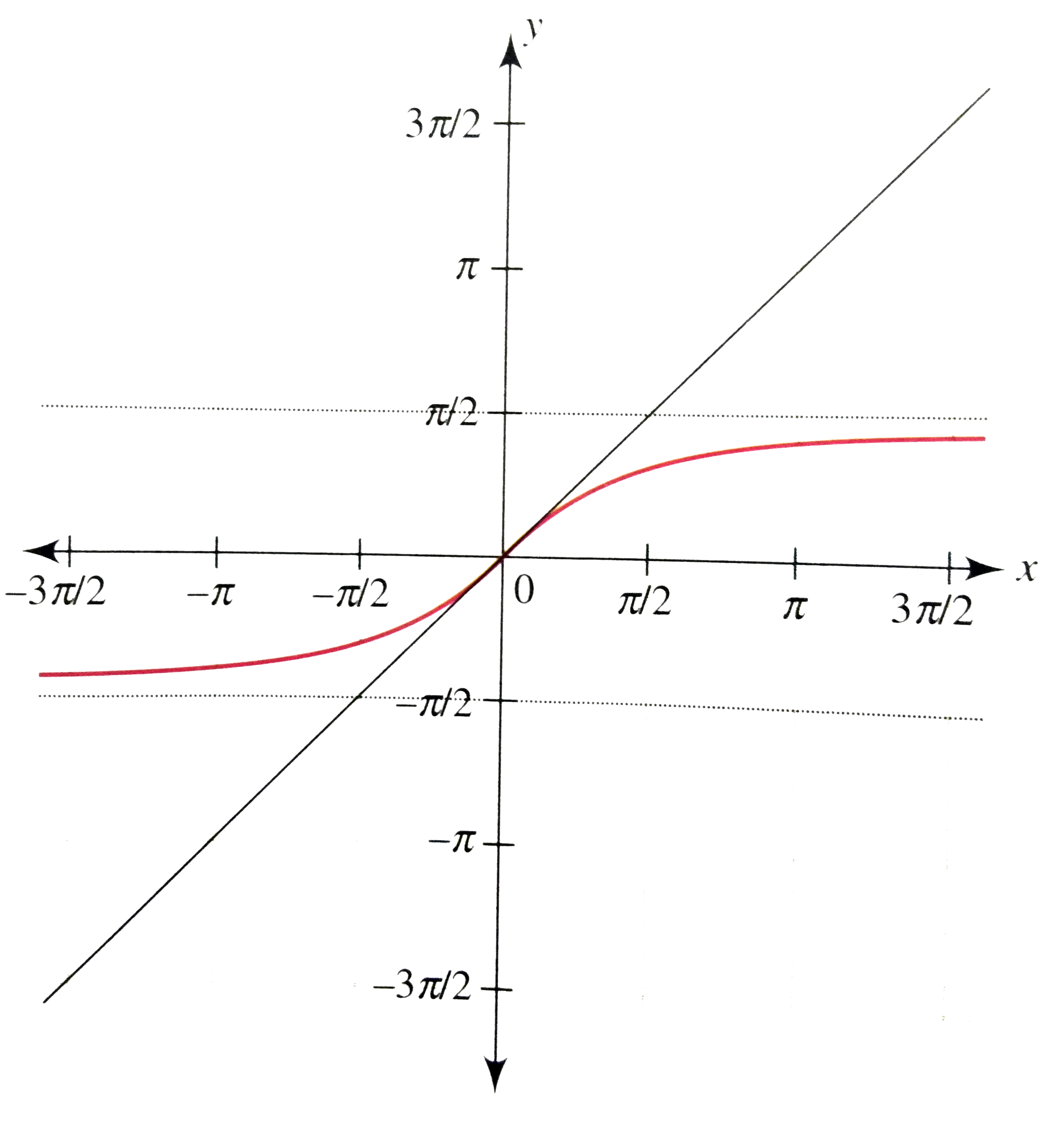Evlute [limtx→0tan−1xx], where [⋅] re[resemts the greatest integer function.
Video Solution
Text Solution
See the graphs of y=x and tan−1x in the following figure.

For f(x)=tan−1(x)=11+x2
∴ f'(0)=1
So the curve touches the line y = x at x = 0
For x>0,f'(x)<1
So the graph of y=tan−1x lies below the graph of y = x.
From the graph, when x→o+, the graph of y = x is above the graph of y=tan−1x
or tan−1x<x⇒tan−1xx<1⇒[limx→0+tanxx]=0
Thus [limx→0+tanxx]=0
|
Topper's Solved these Questions
- GRAPH OF INVERSE TRIGONOMETRIC FUNCTIONSBOOK - CENGAGECHAPTER - GRAPH OF INVERSE TRIGONOMETRIC FUNCTIONSEXERCISE - Exercise
18 Videos
- GETTING STARTED WITH GRAPHSBOOK - CENGAGECHAPTER - GETTING STARTED WITH GRAPHSEXERCISE - Exercise
18 Videos
- GRAPHICAL TRANSFORMATIONSBOOK - CENGAGECHAPTER - GRAPHICAL TRANSFORMATIONSEXERCISE - Exercise
22 Videos
Similar Questions
Knowledge Check
limx→0[100tanxsinxx2] is (where [.] represents greatest integer function).
A99B100C0Dnon-existent
limx→0tan2[x][x]2, where [] represents greatest integer function, is
View SolutionStatement 1: limx→0[tan−1x]=0, where [.] represents greatest integer function. Statement 2: tan−1x<1 in the neighbourhood of x=0.
View SolutionEvaluate: (lim)x→0sinxx,where[.] represents the greatest integer function.
View SolutionDraw the graph of f(x)=[tan−1x], where [⋅] represents the greatest integer function.
View SolutionEvaluate: ∫10π0[tan−1x]dx,where[x] represents greatest integer function.
View Solutionlimx→0[99tanxsinxx2]= Where [.] denotes the greatest integer function
View SolutionLet f(x)=(−1)[x] where [.] denotes the greatest integer function), then
View Solution